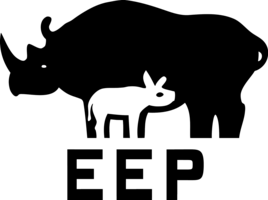Northern Bald Ibis
Geronticus eremita
![[Translate to English:] [Translate to English:]](/fileadmin/_processed_/1/e/csm_waldrapp-tierpark-hellabrunn-welt-der-voegel-tierlexikon_7cd2c3e805.jpg)
- Family
- Threskiornithidae (Ibises and spoonbills)
- Weight
- 1.000 – 1.500 g
- Habitat
- Grassland meadows, pastures and rocky regions
Distinguishing features
At first glance, the bald head with elongated nape feathers is not the most beautiful sight, but these distinguishing features are of great importance to the northern bald ibis. Adult birds have dark spots on their heads that are as individual as our fingerprints. These markings serve, among other things, to help the birds recognize their partners. The voice also plays an important role: the calls made by the northern bald ibis differ to such an extent that even humans are sometimes able to distinguish them.
Flying south
The juvenile birds learn from adults when it is time to go south, which direction to fly and where the wintering grounds are located. The birds fly intuitively in a V-formation. In this formation, all the birds migrating, except for the bird at the tip of the formation, save energy during flight. The birds therefore rotate the tip position to ensure that each bird takes a turn at the tip.
A group of conservationists is working to re-establish wild-breeding colonies in southern Germany, Austria and Switzerland, and to re-teach the birds how to migrate across the Alps to their wintering grounds.
Distribution


Hellabrunn Zoo participates in the European Endangered Species Programmes